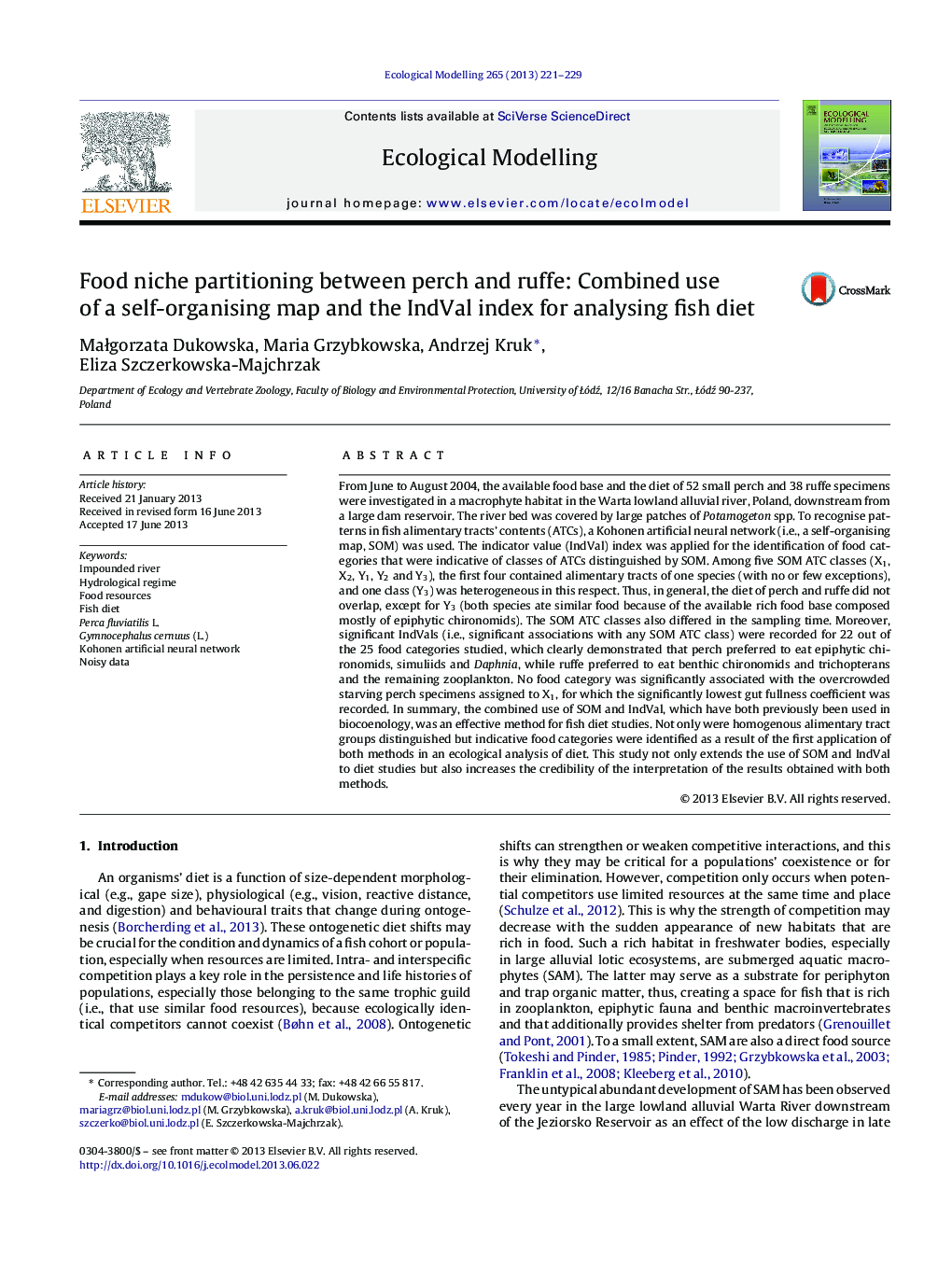| کد مقاله | کد نشریه | سال انتشار | مقاله انگلیسی | نسخه تمام متن |
|---|---|---|---|---|
| 6297095 | 1617481 | 2013 | 9 صفحه PDF | دانلود رایگان |
عنوان انگلیسی مقاله ISI
Food niche partitioning between perch and ruffe: Combined use of a self-organising map and the IndVal index for analysing fish diet
دانلود مقاله + سفارش ترجمه
دانلود مقاله ISI انگلیسی
رایگان برای ایرانیان
کلمات کلیدی
موضوعات مرتبط
علوم زیستی و بیوفناوری
علوم کشاورزی و بیولوژیک
بوم شناسی، تکامل، رفتار و سامانه شناسی
پیش نمایش صفحه اول مقاله

چکیده انگلیسی
From June to August 2004, the available food base and the diet of 52 small perch and 38 ruffe specimens were investigated in a macrophyte habitat in the Warta lowland alluvial river, Poland, downstream from a large dam reservoir. The river bed was covered by large patches of Potamogeton spp. To recognise patterns in fish alimentary tracts' contents (ATCs), a Kohonen artificial neural network (i.e., a self-organising map, SOM) was used. The indicator value (IndVal) index was applied for the identification of food categories that were indicative of classes of ATCs distinguished by SOM. Among five SOM ATC classes (X1, X2, Y1, Y2 and Y3), the first four contained alimentary tracts of one species (with no or few exceptions), and one class (Y3) was heterogeneous in this respect. Thus, in general, the diet of perch and ruffe did not overlap, except for Y3 (both species ate similar food because of the available rich food base composed mostly of epiphytic chironomids). The SOM ATC classes also differed in the sampling time. Moreover, significant IndVals (i.e., significant associations with any SOM ATC class) were recorded for 22 out of the 25 food categories studied, which clearly demonstrated that perch preferred to eat epiphytic chironomids, simuliids and Daphnia, while ruffe preferred to eat benthic chironomids and trichopterans and the remaining zooplankton. No food category was significantly associated with the overcrowded starving perch specimens assigned to X1, for which the significantly lowest gut fullness coefficient was recorded. In summary, the combined use of SOM and IndVal, which have both previously been used in biocoenology, was an effective method for fish diet studies. Not only were homogenous alimentary tract groups distinguished but indicative food categories were identified as a result of the first application of both methods in an ecological analysis of diet. This study not only extends the use of SOM and IndVal to diet studies but also increases the credibility of the interpretation of the results obtained with both methods.
ناشر
Database: Elsevier - ScienceDirect (ساینس دایرکت)
Journal: Ecological Modelling - Volume 265, 10 September 2013, Pages 221-229
Journal: Ecological Modelling - Volume 265, 10 September 2013, Pages 221-229
نویسندگان
MaÅgorzata Dukowska, Maria Grzybkowska, Andrzej Kruk, Eliza Szczerkowska-Majchrzak,